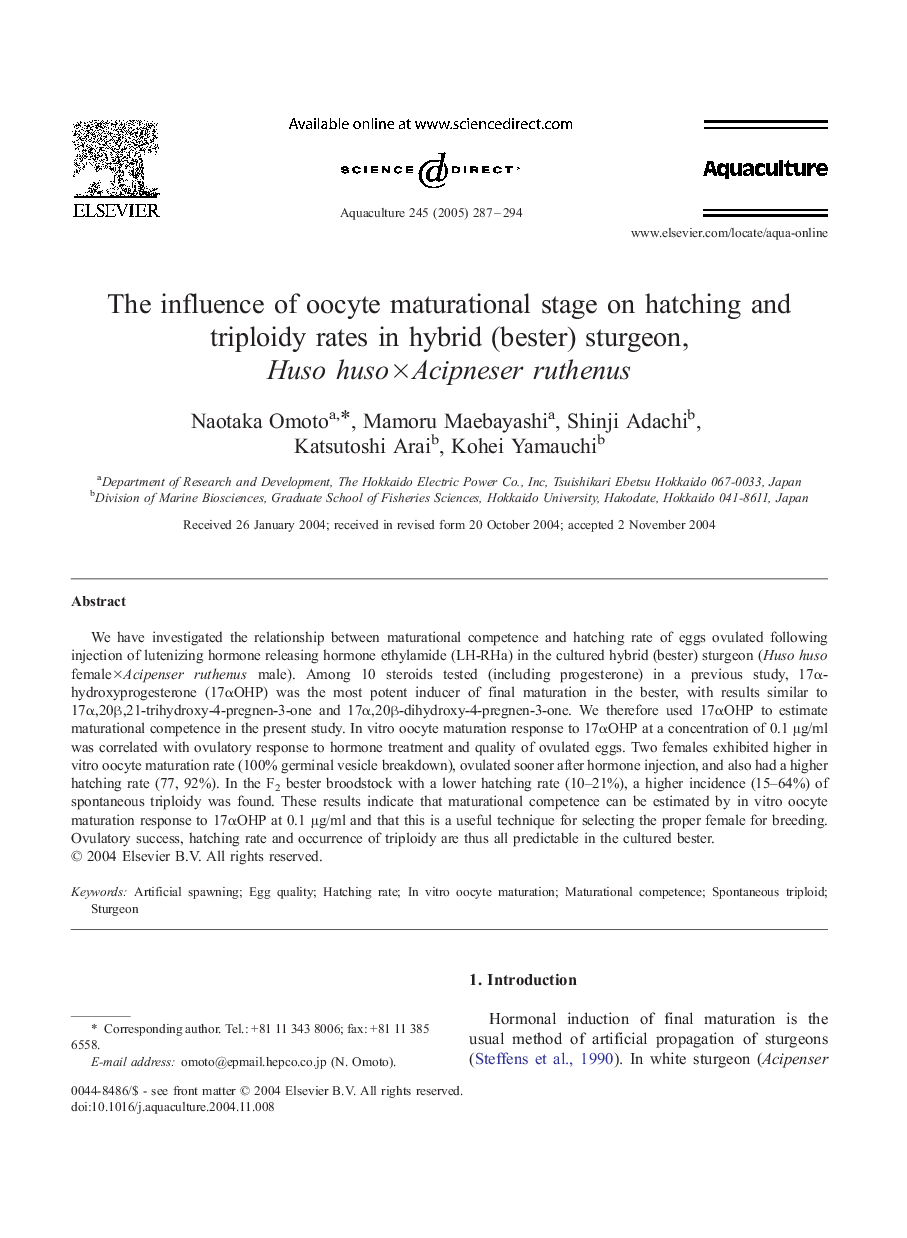| Article ID | Journal | Published Year | Pages | File Type |
|---|---|---|---|---|
| 8974795 | Aquaculture | 2005 | 8 Pages |
Abstract
We have investigated the relationship between maturational competence and hatching rate of eggs ovulated following injection of lutenizing hormone releasing hormone ethylamide (LH-RHa) in the cultured hybrid (bester) sturgeon (Huso huso femaleÃAcipenser ruthenus male). Among 10 steroids tested (including progesterone) in a previous study, 17α-hydroxyprogesterone (17αOHP) was the most potent inducer of final maturation in the bester, with results similar to 17α,20β,21-trihydroxy-4-pregnen-3-one and 17α,20β-dihydroxy-4-pregnen-3-one. We therefore used 17αOHP to estimate maturational competence in the present study. In vitro oocyte maturation response to 17αOHP at a concentration of 0.1 μg/ml was correlated with ovulatory response to hormone treatment and quality of ovulated eggs. Two females exhibited higher in vitro oocyte maturation rate (100% germinal vesicle breakdown), ovulated sooner after hormone injection, and also had a higher hatching rate (77, 92%). In the F2 bester broodstock with a lower hatching rate (10-21%), a higher incidence (15-64%) of spontaneous triploidy was found. These results indicate that maturational competence can be estimated by in vitro oocyte maturation response to 17αOHP at 0.1 μg/ml and that this is a useful technique for selecting the proper female for breeding. Ovulatory success, hatching rate and occurrence of triploidy are thus all predictable in the cultured bester.
Keywords
Related Topics
Life Sciences
Agricultural and Biological Sciences
Aquatic Science
Authors
Naotaka Omoto, Mamoru Maebayashi, Shinji Adachi, Katsutoshi Arai, Kohei Yamauchi,
